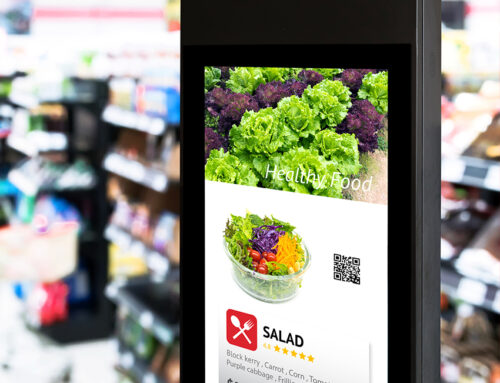Top 10 Digital Advertising Solutions for the Cookieless World
- Adopting a customer-first approach and utilizing Customer data platforms (CDPs), first-party data, zero-party data, and contextual advertising are essential for successful targeting in the post-cookie era.
- Building direct customer relationships through personalized experiences is a key to drive loyalty while collecting zero party data ensures privacy compliance.
- Using mobile apps and adtech solutions allows you to get the most out of limited data without relying on third-party cookies.
As the sun sets on third-party cookies, marketers are faced with the challenge of navigating a cookieless world. Fear not, for we have compiled the “Top 10 Digital Advertising Solutions for the Cookieless World” that will help you thrive in this new landscape. From embracing first-party data to harnessing the power of machine learning, these solutions will ensure your marketing efforts remain effective and privacy-compliant.
1. Embracing First-Party Data
As the cookieless future is emerging, first party data has become essential in advertising campaigns. Companies are now able to benefit from customer information that comes directly from their websites and CRM systems as third-party cookies lose relevancy. Establishing direct connections with customers via CDPs allows for efficient targeting and personalization even without relying on Cookies. With this shift towards a Cookie-free environment taking place, effective use of first-party customer data can make all the difference when it comes to success within businesses nowadays.
Building Direct Customer Relationships
One way to effectively utilize first-party data is by cultivating direct customer relationships. This can be done through personalization, gathering feedback, and offering incentives such as discounts or exclusive content in exchange for their information giving customers what they want while also providing valuable marketing materials.
To build loyalty, utilizing programs like rewards memberships which grant advantages or special access encourages users to share contact details with companies. These pieces of data allow them a better understanding of user preferences when crafting customized activities and creating more bespoke experiences that will help bolster growth at the same time as ensuring consumer satisfaction.
Implementing Customer Data Platforms (CDPs)
CDPs have a major role in categorizing and managing first-party customer information. CDPs provide a comprehensive perspective of customers by combining, storing, and systematizing consumer facts from numerous sources, allowing them to personalize communications precisely for them.
Second-party data collaboration can also help these efforts by encouraging collaboration between businesses that share buyer information with one another in order to maximize their advertising goals. Implementing CPD’s assists marketers to take advantage of the capacity offered by 1st-party records during navigation without cookies circumstances as it allows publishers provided ID’s (PPID’S ) to trace target users across different sites. Thus consolidating third party info when necessary in order to build User ID Graphs along with personalization aimed at accomplishing marketing strategies more efficiently using initial party facts collected.
2. Zero-Party Data: The New Goldmine
As we are saying goodbye to third-party cookies, zero-party data is becoming a valuable resource for advertisers. This type of information that customers willingly share with companies grants access to plenty of knowledge which can be employed in order to personalize experiences and customize target audiences without breaching any privacy regulations.
In this article, we will delve into how one could gather such zero party data and make proper use of it towards giving people individualized outcomes.
Collecting Zero-Party Data
Zero-party data collection encourages customers to voluntarily share their preferences and interests directly with a brand. This can be done through surveys, polls, quizzes or preference centers where users are given the choice whether they wish to participate in providing such information. Having access to this type of data allows businesses the ability to tailor marketing efforts towards personalization for those who consent. It is important that transparency and user consent remain by giving consumers an option to opt out if desired as well as limiting unnecessary collected information from parties involved.
In order to make zero party data more attractive, incentivizes like discounts or exclusive content could also help persuade individuals into sharing said knowledge which would naturally result in higher value production derived from gathering such resources.
Using Zero-Party Data for Personalization
Zero-party data can be a useful tool for developing customized marketing campaigns, offering personalized deals and content while still adhering to customer privacy laws. It is essential that organizations keep security measures in place when collecting this type of information. Transparency about the collection and use of zero-party data can help to establish customer trust by ensuring that any efforts performed remain ethical and successful.
3. Reviving Contextual Advertising
Contextual targeting for cookieless ad campaigns is becoming more and more common as third-party cookie usage declines. This method relies on delivering ads based on the context of a user’s consumption and helps keep marketers in compliance with privacy regulations by not connecting users to their individual identities.
The benefits associated with this style of advertising are numerous. Let’s take some time to consider them as well as explore best practices when it comes to launching successful contextual marketing efforts.
Benefits of Contextual Advertising
Contextual Advertising has several advantages, one being increased relevance. Ads that are in line with what users view have an improved chance of getting engaged or converted. It also improves user experience because the advertisements they view frequently grab their attention.
This advantage is enhanced by its adherence to privacy regulations. Contextual marketing does not violate any confidentiality or data security requirements because it targets viewers based on content rather than identification and does not require third party cookies. This makes it highly attractive for marketers who wish to reach a large group yet comply with relevant legal requirements.
4. Best Practices for Contextual Targeting
To maximize the success of contextual ads, one must take advantage of sophisticated algorithms, natural language processing and machine learning to assess content as well as deliver targeted messages. Programmatic advertising makes it possible to recognize user habits and trends with ease, allowing for more personalized advertisements that will be appreciated by customers.
It is essential to consistently review your strategies when it comes to contextual targeting in order to both enhance effectiveness while adhering to firmly privacy protocols. Keeping tabs on how each advertisement performs allows you fine-tune tactics for ultimate results in successful contextually aware campaigns.
5. Consent-Based Marketing
When it comes to responsible data collection in the cookieless world, consent-based marketing plays an important role. Brands must gain explicit permission from users before accessing any personal information, this creates a sense of trust and compliance with privacy regulations.
In this section we’ll discuss how marketers can design transparent mechanisms for obtaining user consent as well as ways to incentivize people into sharing their data.
Creating Transparent Consent Mechanisms
To ensure that customers are informed about the collection and use of their data, open approval processes must be secured. By transparently revealing your collection methods and securing user consent before gathering sensitive information, you can build trust with your audience while still fulfilling personal privacy laws.
A good technique for getting permission from the users involves opt-in forms, checkboxes, or pop-ups. Giving people a clear option as well as being able to reject collecting data ensures that marketing efforts remain moral yet successful at the same time.
Rewarding Users for Sharing Data
Offering incentives to customers who allow their data to be collected can result in valuable insight for marketing teams. Discounts, loyalty points and exclusive content may encourage people to share info with brands, forming a mutually beneficial relationship between them both.
Maintaining transparency as the top priority is important. Establishing trust while abiding by privacy laws and guaranteeing the effectiveness of campaigns requires businesses to be transparent about how this information will be used and to provide an opt-out option if users do not want it collected.
6. Harnessing the Power of Machine Learning
The use of machine learning and AI-driven advertising solutions is a huge asset for brands trying to survive without third party cookies. Data from first-party sources combined with contextual information can be utilized by predictive analytics in order to create personalized campaigns that are targeted accurately.
We’ll look into the implementation of these cutting edge tools as well as how they aid targeting initiatives throughout this section.
Predictive Analytics for Targeting
For targeting in a cookieless world, predictive analytics is an invaluable tool. It provides brands with the capability to target their campaigns accurately and efficiently while also recognizing user behavior patterns as well as trends for more personalized marketing plans and cost-saving performance improvements.
Using this technology effectively requires collecting data from multiple sources, applying machine learning algorithms to discover these methods of targeting users along with assessing strategies to ensure compliant yet successful marketing efforts are being carried out successfully. These processes enable better understanding of user preferences helping companies create meaningful customer experiences ultimately leading to optimized efficiency results in terms of profitability and ROI optimization on specific investments made towards targeted channels/campaigns.
Implementing AI-Driven Advertising Solutions
Navigating the cookieless world can be a daunting task for brands, yet AI-driven advertising solutions are able to provide numerous advantages. Benefits include higher accuracy of targeting, personalized campaigns and improved ad expenditure efficiency that consequently result in lower cost with greater returns on investments.
To make sure marketing efforts fall into compliance with data privacy laws while also achieving success from such strategies as outlined above, it’s crucial that businesses implement artificial intelligence approaches carefully by monitoring regulations closely and using insight informed through data analysis to inform decisions regularly so current methods may be refined continually if needed or desired.
By taking advantage of AI-driven systems providing these benefits while staying compliant regarding applicable rules concerning personal information security guidelines relating to this new digital age, companies have an edge over their competitors allowing them to better equip themselves when entering markets within the modern cookie free domain.
7. Diversifying Media Mix Modeling
In this part of the article, we will address strategies for effectively assessing channel performance and explore how to maintain a balanced paid, owned and earned media mix in cookieless environments. It is essential that advertisers diversify their media mix modelling approach as they review channels results.
This way companies can ensure proper balance between various forms of advertisement. Securing successful outcomes which are unhindered by any cookie-related obstacles.
Evaluating Channel Performance
To ensure that marketing initiatives comply with current privacy regulations, it is essential to evaluate the performance of various channels in a cookieless world. Data-driven decisions are made possible by analyzing customer lifetime value, gauging engagement levels and tracking acquisition costs – all key components when assessing campaign success. Continuous monitoring of these metrics helps guarantee effective outcomes from respective promotional efforts.
Effective Digital Marketing Strategy
A balance between paid, owned, and earned media is key for devising an effective digital marketing strategy that keeps up with the ever-changing online landscape. To obtain this equilibrium, it is necessary to be aware of the benefits and drawbacks of each channel type, set clear targets for every platform used, and monitor how well they are working in order to ensure their efficiency. By doing these steps advertisers will have access to a balanced mix that optimizes all their promotion actions.
Several methods exist for how to get hold of a good blend, including utilizing mobile apps/in-app advertising, combining various types via modelling, or partnering with adtech companies. These methods enable them to stay informed about what happens in the rapidly changing virtual world while ensuring that the effectiveness of executions within businesses’ marketing strategies overall remains intact.
8. Leveraging Mobile Apps and In-App Advertising
In today’s cookieless world, mobile apps and in-app advertising provide a unique opportunity to collect data and target users more effectively. This section will explore different techniques for gathering information about consumer behavior from app usage as well as strategies for implementing successful ads campaigns within these programs.
App-Based Data Collection
Using mobile apps, companies can acquire vital user data without resorting to third-party cookies. This information such as location, device specs and usage patterns allows for more tailored promotional campaigns.
Customers must be provided clear instructions on how their information will be used, together with the option to opt out if they so desire, to guarantee that legal security in compliance with data protection standards is preserved. In addition to enabling moral marketing efforts, this protects a company’s reputation.
Effective In-App Advertising Strategies
In order to create successful in-app ad campaigns, companies should consider aspects like the user’s needs and interests, along with what is currently available on the app. The ads displayed must be attractive enough for users to take action and optimized for mobile devices as well. It is important that advertisers abide by data protection regulations when creating their campaigns.
To ensure the success of an in-app advertising strategy, personalization based on each individual’s context, including preferences, can drive conversion rates higher than ever before! Ads crafted resonant with your target audience have a great chance of increasing engagement, which ultimately leads to more conversion opportunities.
Ultimately best practice indicates utilizing tailored ads according to specific requirements while taking into account both content related topics presented within the application itself as well as those factors regarding each individual user such as likes or dislikes etc. All apps shown need ample visual appeal plus contain understandable CTA actions, especially if being featured across smartphone technology platforms.
9. Navigating Google Analytics in a Cookieless World
Navigating Google Analytics in a cookieless world can be difficult and requires changing the approach. GA4 presents new challenges for advertisers that must be addressed to maximize insights from limited data sources. To stay ahead, it’s important to understand how best to adapt privacy-centric tracking strategies to this shifting landscape.
Adapting to GA4 and Privacy-Centric Tracking
In order to successfully adapt to GA4, the newest version of Google Analytics, it’s important for advertisers to understand its features and limitations as well as adjust their tracking strategies with respect to privacy laws. This more advanced iteration offers additional tools related to user data control including IP address anonymization, pseudonymous identifiers utilization, and limiting collection practices overall in support of protecting individuals’ online safety.
Using these protection measures while adapting to all that GA4 has to offer helps ensure compliance thus allowing users to keep gathering crucial insights without infringing on personal rights regarding security.
Maximizing Insights from Limited Data
In order to capitalize on insights from limited data and comply with privacy regulations, advertisers need to rely on sophisticated analytics tools such as machine learning, predictive analytics, and artificial intelligence. Focusing on metrics like customer lifetime value (CLV), cost of acquisition rate (CAC) and customer retention rate provides key performance indicators that can guide marketing decisions in the cookieless world. With these advanced tactics, marketers are better able to optimize their campaigns ensuring they deliver optimal results while still respecting consumer privacy.
10. Collaborating with Adtech Companies
This section will discuss the process of finding an appropriate Adtech partner to collaborate with and effectively incorporating their solutions into your marketing strategy. Having a trustworthy Adtech partner is essential for advertisers to overcome the difficulties brought on by cookieless environments.
We shall cover how to pick the right partner as well as strategize about integrating such technology-driven approaches in this segment.
Choosing the Right Adtech Partner
Finding a suitable Adtech collaborator is essential for guaranteeing that your promotional campaigns are profitable and adhere to privacy regulations. When evaluating potential partners, key elements such as their proficiency, tech solutions available, and loyalty to following data protection rules should be taken into account.
Working together with an Adtech company that understands the difficulties of advertising in a cookie-less world can help advertisers refine their digital marketing strategies while adapting successfully to new trends within the industry.
Integrating Adtech Solutions
In order to leverage Adtech solutions in your marketing plan, data privacy regulations must be observed and insights based on information should inform decisions. This is how campaigns can remain effective while still being compliant with the laws regarding third-party cookies. Without them, it’s possible to use optimization strategies that lead to better results from a campaign standpoint.
By continuously evaluating and adjusting tactics as needed, you will ensure the successful integration of those tech tools into your strategy, enabling more personalized targeting for each individual consumer without having to rely solely on said cookies anymore. All these efforts are necessary if one wants their marketing undertakings to look good under scrutiny but also prove efficient overall.
Summary
In the age of digital advertising, marketers must adjust to a world without third-party cookies. By capitalizing on first-party data, encouraging zero-party information gathering, and embracing contextual ads via machine learning technologies – companies can continue crafting personalized campaigns while protecting users’ privacy. Brands should collaborate with Adtech providers in order to effectively navigate this cookieless landscape and utilize data for successful marketing strategies in the future.











